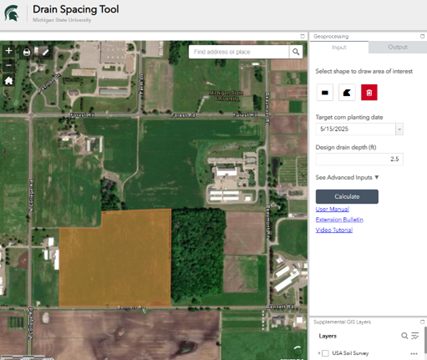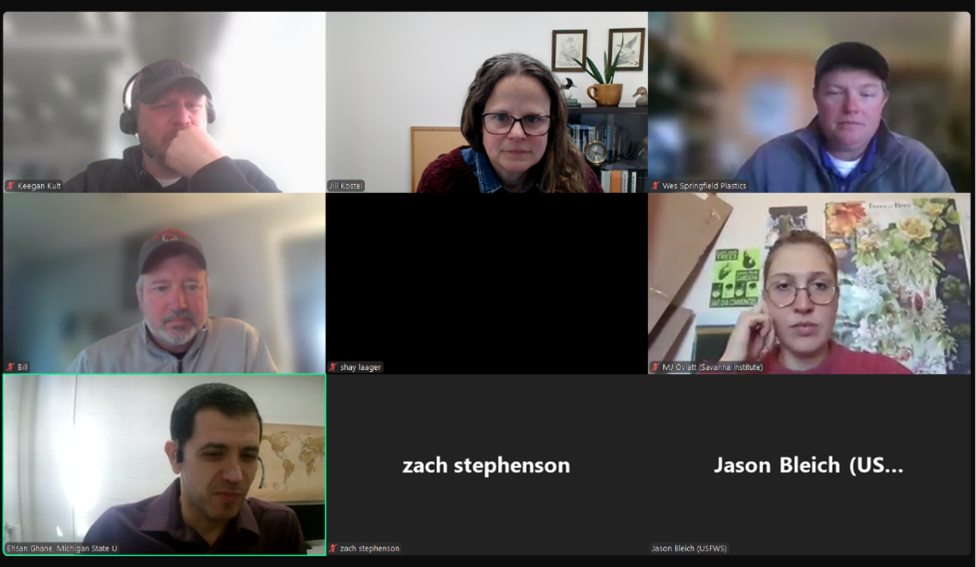Every quarter, a group of conservation professionals from non-profit groups, government agencies, and the tile drainage industry get together to share news and learn from one another. These 2-hour meetings are hosted by the Wetlands Initiative, but they are led by Wes Lehman. Wes is a sales rep and conservation specialist for Springfield Plastics, Inc.
Wes started the meetings in 2024 to learn more about different conservation tools and resources. He wanted to be able to give the best advice to his customers (contractors, farmers and landowners) about how to improve soil health, grow better crops, and keep water cleaner for people living downstream.
In 2025, the meetings have grown. They now begin with a “Let’s Hear It” session where people talk about what their organizations are doing, like upcoming field events, education programs, or new funding opportunities. During this first hour, the group often discusses a hot topic, such as updates to the Farm Bill or how government programs are affecting conservation work. Since a few organizations in the group are part of ISAP, tools and resources created by ISAP are also shared.
The second hour is called the “Spotlight Discussion.” During this time, a guest speaker shares how their work is helping the conservation community. For the second quarter of 2025, the guest was Dr. Ehsan Ghane, an Associate Professor of Biosystems and Agricultural Engineering and a Drainage Extension Specialist with Michigan State University. Dr. Ghane’s research and extension interests focus on agricultural water management systems and water quality.

Dr. Ehsan Ghane demonstrates his online drain spacing calculator (bottom photo) which is available at https://dsiweb.cse.msu.edu/demo/DrainSpacingCalculator/
Dr. Ghane demonstrated an online drain spacing calculator that helps farmers or tile contractors determine optimal drain spacing for their fields based on local weather and economic factors. The drainage design tool aims to balance yield, profitability, and conservation by avoiding overly narrow or wide spacing. Dr. Ghane shared that he is working to update the drain spacing tool to include economics and return on investment calculations.
In addition, Dr. Ghane discussed a new tool he’s working on for the siting and design of saturated buffers at the farm-level. A saturated buffer stores water within the soil of the field buffer by diverting drainage water from the control structure (that raises the water table) into shallow perforated drains that run parallel to a ditch. As a result, the water flows through the natural filter of the soil reducing nitrate transport to the ditch or stream. All the drainage design tools (i.e., drain sedimentation tool, sizing main, drainage coefficient) are designed to help farmers and drainage contractors make informed decisions about drainage systems while considering conservation aspects.
If you are a conservation or tile drainage professional and would like to join these calls in the future, please contact Jean McGuire at jmcguire@wetlands-initiative.org.

Call participants listen as Dr. Ghane presents.
Dr. Ghane presented during ISAP’s 2022 Risk Management Conference, busting the myth that “Conservation and Tile Drainage Don’t Mix.” You can learn more about ISAP’s Risk Management Conference here or watch Dr. Ghane’s presentation on ISAP’s YouTube channel.